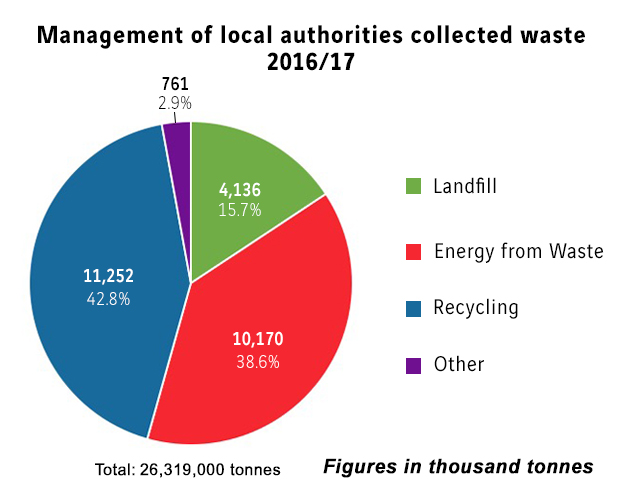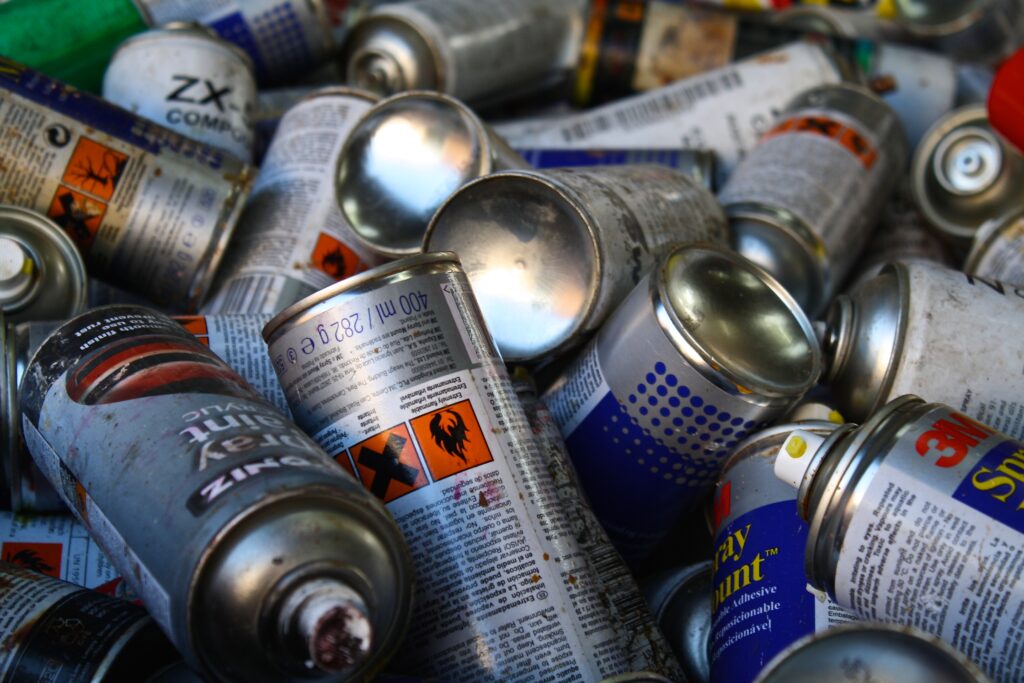According to figures for all local authority waste released today by Defra in 2016/17, over the financial year 38.6% of waste was sent for energy recovery while 45.1% was recycled. However, slight differences in terminology mean that in the outlet calculations Defra uses a recycling rate lower than the headline figure, meaning that the gap between the two treatment routes is even smaller.
Five years ago, while the recycling rate was broadly similar to now, just 19.1% of waste was recovered for energy. The change coincides with a reduction in the use of landfill and an increase in RDF exports to the continent from municipal contracts.
Bottom ash
The increased volume of energy recovery also adds a small boost to the recycling level of about 0.6% in terms of incinerator bottom ash recycling. However, green waste volumes and tighter rules governing the counting of recycling from MRFs are of more significance to the recycling rate.
The publication of the Defra figures for recycling, composting and waste management in England for the 2016/17 financial year give a range of information, including the fact that the weight of waste per household is on the rise.
(Note: table below is for all local authority waste and the recycling rate is lower than the headline figure of 45.1% which is for waste from households).
Waste arisings
In 2016/17 the kilogramme waste per household was 411 kgs, up 1kg from the previous year. The figure is still well down from the high levels seven years ago, when it was 429kg per year. However, there has been a small but steady rise over past years.
In terms of dry recycling, the rate has been virtually the same for the past four years, ranging from between 32.06% to 32.6% for 2016/17. The fact that it has not fallen further in the wake of the crackdown on MRF quality could suggest that rises in recycling are overcoming some of the reductions in recycling rates required because of more rejects arising at the MRFs.
Total local authority collected household waste for England, including from non household sources in 2016/17 stood at 26,210,000 tonnes, the highest figure since 2009/10. However, population increases in England are likely to be a factor behind the increase although there is an overall increase. Nevertheless, the figure is still about 2-3 million tonnes lower than in the period 2000 to 2009.
Landfill
Landfill tonnages reduced to 4,136,000 tonnes – in 2000/01 the figure was 22 million tonnes. In contrast, the amount of incineration has increased to 10,170,000 tonnes last year compared to 2.4 million tonnes in 2000/01.
Recycling and composting accounted for 11,252,000 tonnes of waste.
Regions
Looking at England by regions, Eastern England was the best performer in 2016/17 with a recycling and composting rate of 49.4%. Lower results came from London at 33% and the North East at 35.7%.
The largest increases in recycling were achieved by Stroud district council which saw its recycling and composting rate jump by 14% to 45.5% while Maldon’s rose 11% to 58%.
The lowest household waste generation per head was in Tower Hamlets unitary authority, London with 244kg per person, followed by Ealing at 250kg.












Subscribe for free